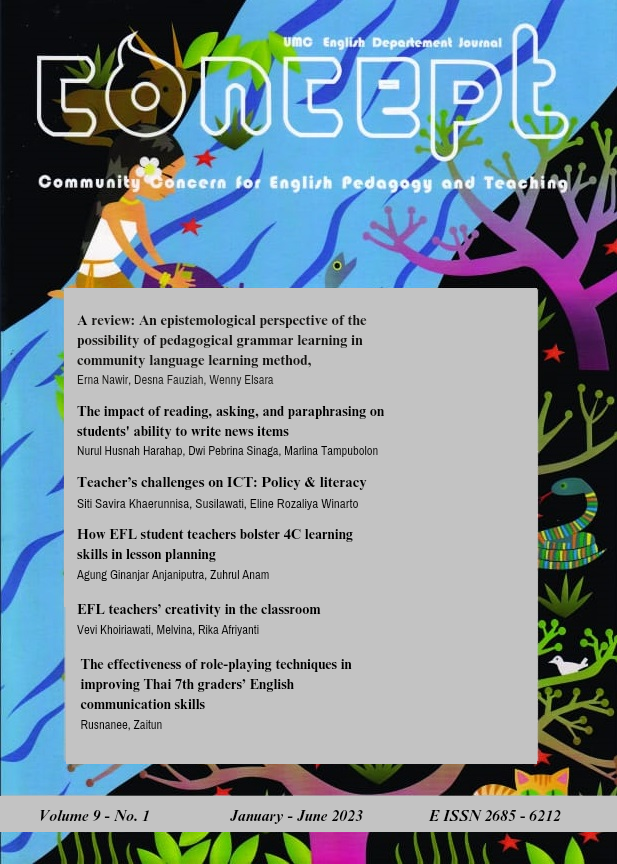The impact of reading, asking, and paraphrasing on students' ability to write news item
DOI:
https://doi.org/10.32534/jconcept.v9i1.4572Abstract
This study aims to find out how students' ability to write news items is impacted by reading, asking, and paraphrasing strategies. The goal of the study was to determine whether the reading, asking, and paraphrasing strategies had a substantial impact on the students' ability to write news items. The SMA Negeri 2 Tg. Balai on Jl Sudirman served as the site for this study. The first-graders of the academic year 2015–2016 made up the study's population. 40 pupils served as the sample, while 320 students made up the pupulation. A research design known as experimental was used to carry out this investigation. Two distinct classes served as the research sample in the design. The control group was one of the classes, and the experimental group was the other. The control group received no treatment, whereas the experimental group received it using the reading, asking, and paraphrasing technique. A written test served as the research's primary tool. The t-test formula was used to determine the t-observed values for both groups as the foundation for testing the research's main premise. According to the study's findings, the tobs value was higher than the t-table value, which had a t-obs value of 3.28 and a t-table value of 2.02. Tobs > Ttable (3.28 > 2.02), as evidenced by this. The theory was approved. It suggests that the students' success in writing news items was significantly impacted by the use of the reading, asking, and paraphrasing strategies.
Keywords: reading; asking; paraphrasing strategy; news item; writing







